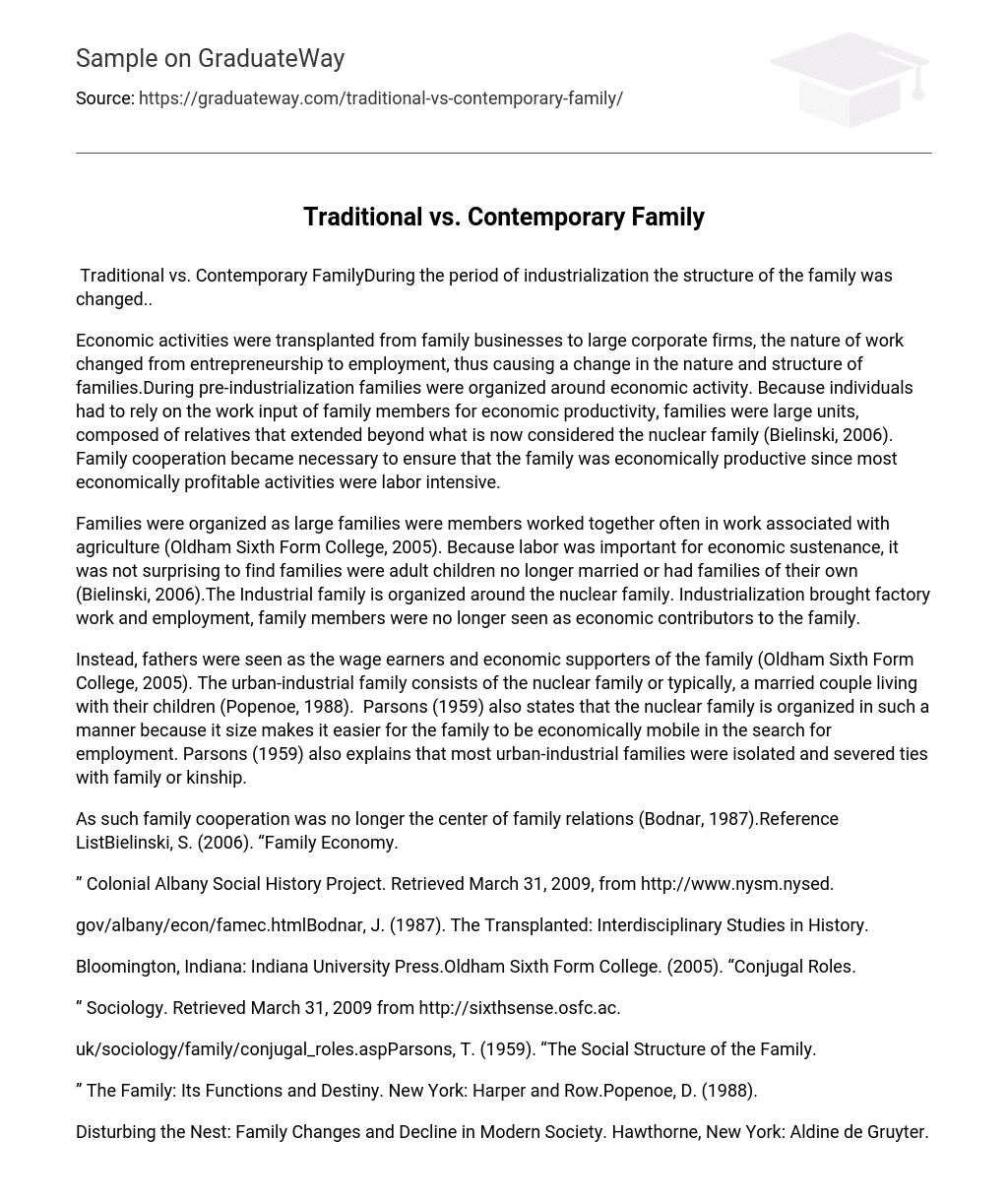Traditional vs. Contemporary FamilyDuring the period of industrialization the structure of the family was changed..
Economic activities were transplanted from family businesses to large corporate firms, the nature of work changed from entrepreneurship to employment, thus causing a change in the nature and structure of families.During pre-industrialization families were organized around economic activity. Because individuals had to rely on the work input of family members for economic productivity, families were large units, composed of relatives that extended beyond what is now considered the nuclear family (Bielinski, 2006). Family cooperation became necessary to ensure that the family was economically productive since most economically profitable activities were labor intensive.
Families were organized as large families were members worked together often in work associated with agriculture (Oldham Sixth Form College, 2005). Because labor was important for economic sustenance, it was not surprising to find families were adult children no longer married or had families of their own (Bielinski, 2006).The Industrial family is organized around the nuclear family. Industrialization brought factory work and employment, family members were no longer seen as economic contributors to the family.
Instead, fathers were seen as the wage earners and economic supporters of the family (Oldham Sixth Form College, 2005). The urban-industrial family consists of the nuclear family or typically, a married couple living with their children (Popenoe, 1988). Parsons (1959) also states that the nuclear family is organized in such a manner because it size makes it easier for the family to be economically mobile in the search for employment. Parsons (1959) also explains that most urban-industrial families were isolated and severed ties with family or kinship.
As such family cooperation was no longer the center of family relations (Bodnar, 1987).Reference ListBielinski, S. (2006). “Family Economy.
” Colonial Albany Social History Project. Retrieved March 31, 2009, from http://www.nysm.nysed.
gov/albany/econ/famec.htmlBodnar, J. (1987). The Transplanted: Interdisciplinary Studies in History.
Bloomington, Indiana: Indiana University Press.Oldham Sixth Form College. (2005). “Conjugal Roles.
” Sociology. Retrieved March 31, 2009 from http://sixthsense.osfc.ac.
uk/sociology/family/conjugal_roles.aspParsons, T. (1959). “The Social Structure of the Family.
” The Family: Its Functions and Destiny. New York: Harper and Row.Popenoe, D. (1988).
Disturbing the Nest: Family Changes and Decline in Modern Society. Hawthorne, New York: Aldine de Gruyter.





